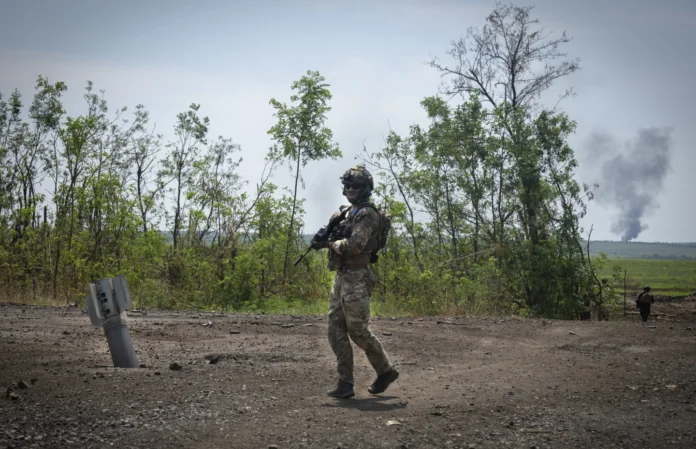KIEV, UKRAINE — In a carefully planned operation, Ukrainian forces successfully recaptured the village of Neskuchine in the eastern Donetsk region on June 10, a decisive victory in the latest counteroffensive against Russian forces. Ukrainian commanders postponed the ambush three times before finally concluding that the conditions were favorable for the operation. Under cover of darkness, the 129th Brigade in Kiev launched a stealth attack, surprising the unsuspecting Russian forces.
The recapture of Neskne is an example of a strategy to launch a large-scale Ukrainian counteroffensive, in which the platoon aims to use surprise elements to advance in stages in both territory and battlefield reconnaissance. The Ukrainian military relies on the advantage of modern Western weaponry to gain an edge in the conflict. The success of the counterattack will depend on the ability to exhaust the enemy and rebuild the lines to create more favorable conditions for the advance eastward. One possible strategy is to divide the Russian military in two, effectively isolating the illegally annexed Crimea from the rest of Russia’s control.
A recent armed uprising by mercenaries from the Wagner Group, led by Russian warlord Evgeny Prigozhin, has boosted morale in the Ukrainian army. But experts remain uncertain how the conflict in Russia will affect the course of the war. The power struggle has distracted Russia’s military and political leadership, but its impact on the battlefield has so far been minimal. Ukrainian forces have stepped up operations in recent days around the eastern city of Bakhmut, seeking to regain control after months of heavy fighting and its subsequent handover to Russian forces. Ukrainian forces are making small but steady advances, but have yet to exercise the operational initiative necessary to set the pace and conditions of action. Counterattacks face difficulties as Russia’s strong positions and relative air superiority slow Ukraine’s advance.
Both Russia and Ukraine have a clear advantage in the conflict. Russia depends on manpower and ammunition, Ukraine on versatility and modern weapons. But as the muddy autumn season approaches, Ukrainian commanders are well aware that time is of the essence.
Some observers have expressed concern that the counteroffensive has not lived up to expectations because it bears no resemblance to Ukraine’s rapid liberation of eastern Kharkov last year. The current offensive has become a more difficult task due to the fortifications that the Russians have built over a long period of time. Russian officials claim that Ukraine suffered heavy casualties during counterattacks, but cannot independently verify these claims.
Combat takes place on multiple battlefields, with important developments occurring in different regions. The catastrophic dam failure in the southern Kherson region changed the geography along the Dnieper, allowing Ukrainians to move more freely. Ukrainian forces, supported by tanks, artillery and drones, are advancing southeast of Zaporizhia and could deal a heavy blow to Russian forces if they regain access to the Sea of Azov. However, it is still too early to assess the feasibility of this goal.
Ukrainian forces are still several kilometers from Russia’s main defensive line, and the deeper they advance into the occupied territories, the more dangerous Russia’s defenses, including minefields, anti-tank pits and other obstacles. Moreover, Russian airstrikes are increasing the threat to their progress. About 130 square kilometers of land have been retaken in the south since the counterattack began, but the pace of progress has been slower than expected.






